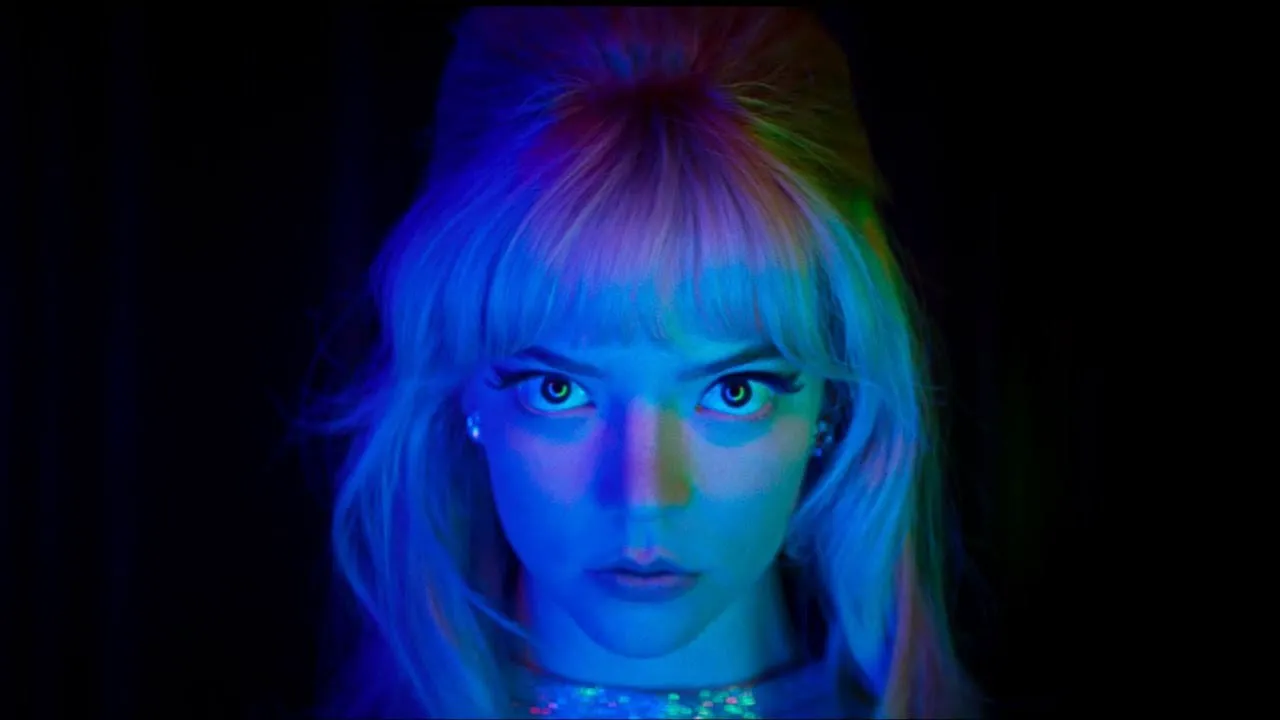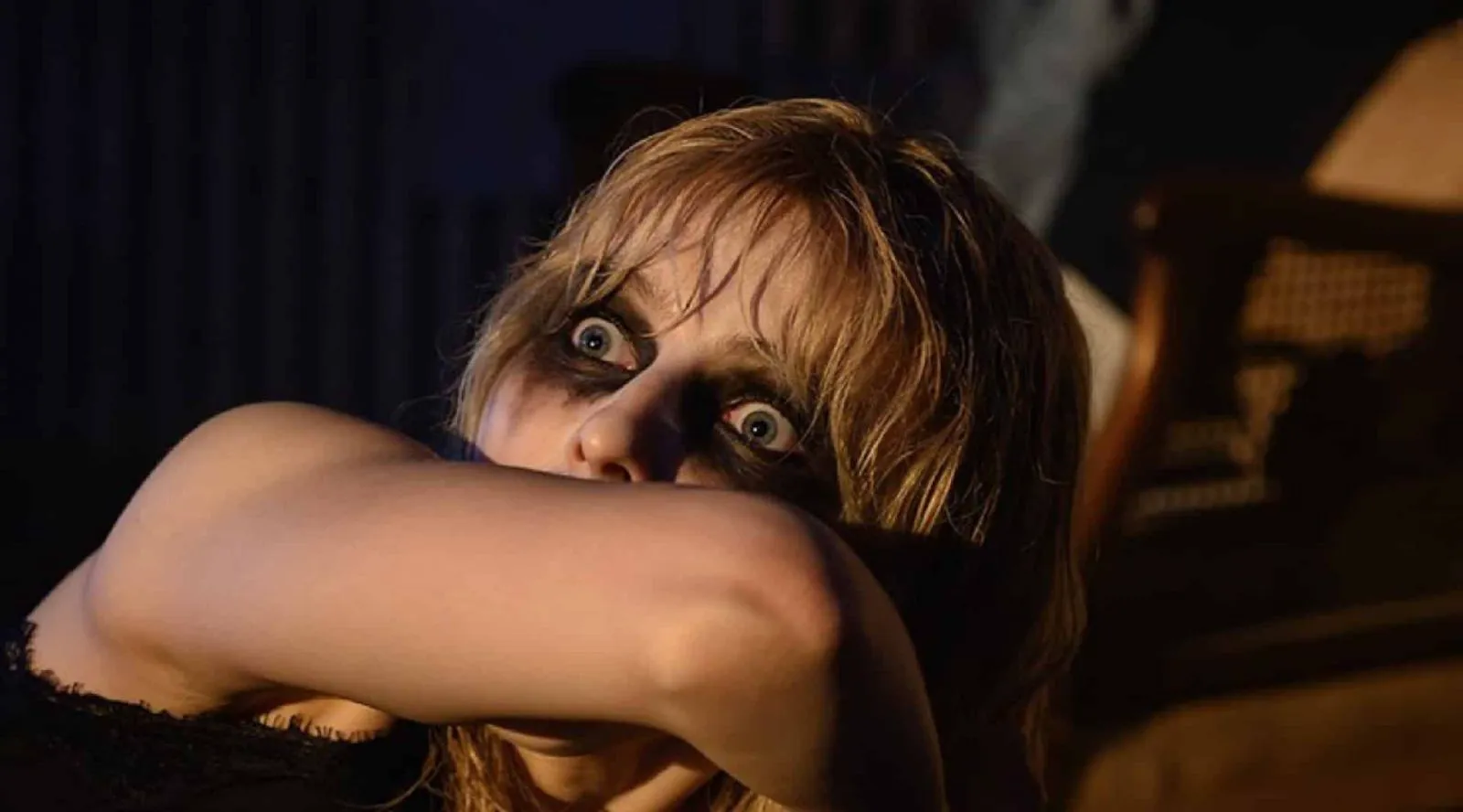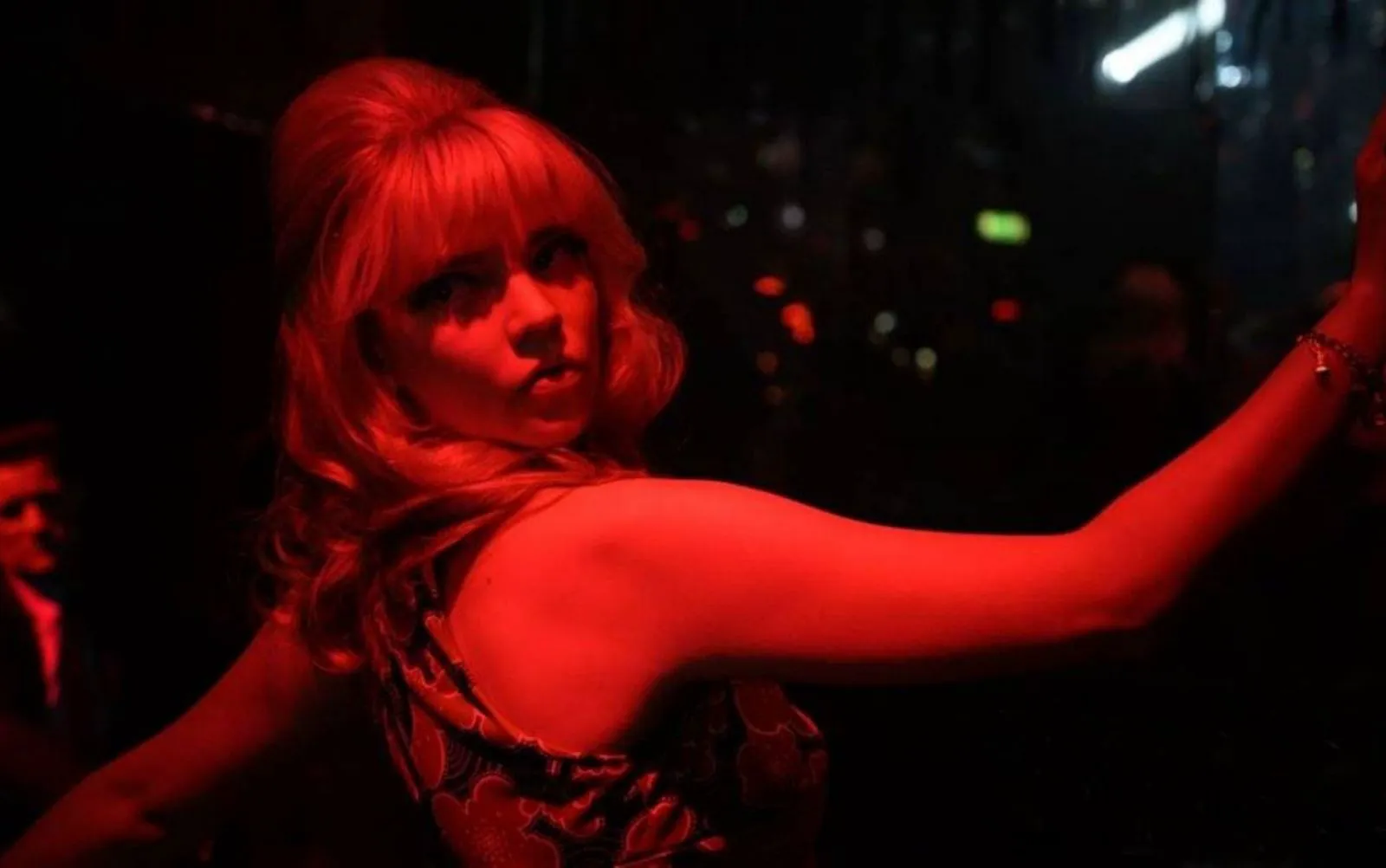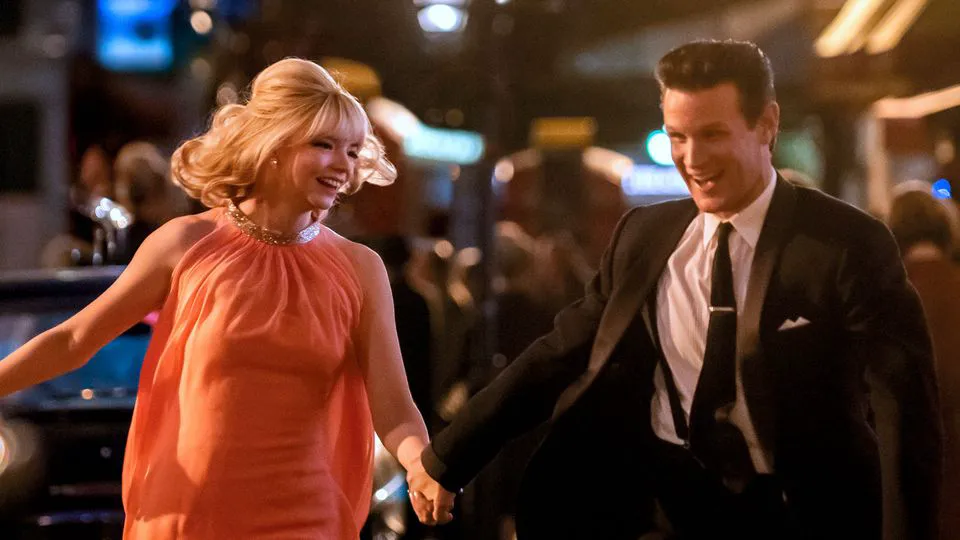Last Night in Soho: A Nostalgic Nightmare
Eloise (Thomasin McKenzie), a young woman from the English countryside, arrives in London to pursue her dream of becoming a fashion designer. Her mother had once chased the same ambition, but succumbed to the psychological pressures and took her own life. Now, Eloise occasionally sees her mother’s image in mirrors. Introverted and passionate about retro fashion, she struggles to fit in with the trendy student crowd and moves out of the dorms into a rented room in an old house. One night, after falling asleep in her new place, Eloise is transported to the London of the 1960s, a world she feels strangely connected to. There, she observes Sandie (Anya Taylor-Joy), a captivating singer trying to break into the city’s vibrant music scene with the help of her charming but manipulative manager, Jack (Matt Smith).
What Eloise initially perceives as harmless dreams soon evolves into something more profound. She begins to see places from her visions in real life, places she couldn’t possibly know, and encounters people who seem to have aged half a century. As the dreams grow darker, the line between reality and illusion blurs with each passing night.

Anya Taylor-Joy as Sandie in “Last Night in Soho”
Edgar Wright’s Ode to the Past
Director Edgar Wright himself seems like someone who longs for a bygone era when life was simpler, movies were better, streaming services didn’t exist, and Sean Connery ruled the Bond franchise. While his early works like “Shaun of the Dead” and “Hot Fuzz” were a whirlwind of references and styles, “Baby Driver” made his nostalgic leanings clear – a 70s-inspired action film paying homage to Walter Hill’s “The Driver” and other classic heist thrillers. “Last Night in Soho” continues this exploration, drawing inspiration from British horror films of the 60s, Roman Polanski, and Nicolas Roeg.
However, Wright’s approach has evolved. Instead of simply parodying and subverting clichés, he now creates pure genre cinema, albeit with a strong cinephilic sensibility.

Thomasin McKenzie as Eloise in “Last Night in Soho”
Reimagining the Classics
It would be strange for Wright to continue down the same path after the “Cornetto Trilogy,” no matter how brilliant he was in that space. He’s discovered a new way to express his love for cinema: not through imitation or irony, but through stylistic adaptation, attempting to revive the “spirit” of those great films of the past. This is a key feature of “Last Night in Soho” (and “Baby Driver” as well). Despite the obvious homages and nods to his predecessors, Wright’s films aren’t mere stylizations. He doesn’t create his films based on the classics that impressed him as a child, but rather on his memories of those classics. In other words, “Last Night in Soho” isn’t “Repulsion” or “Don’t Look Now.” It’s how a young, impressionable Edgar Wright might have perceived “Repulsion” decades ago.

Anya Taylor-Joy as Sandie in “Last Night in Soho”
A Masterclass in Visual Storytelling
Neither Roeg nor Polanski could have made this film, not technically. And it’s not just about the difference in available tools. “Last Night in Soho” showcases an incredible mastery of directorial choreography. It’s one of those rare films that makes you wonder, “How on earth did they film that?” The camera swirls in intricate dances, a drab London transforms into a vibrant retro postcard, reality collides with a magical looking-glass, and reflections become the reflected. “Last Night in Soho” is a stunning visual masterpiece, solidifying Wright’s status as one of the leading craftsmen in contemporary cinema.
His style remains recognizable even without his signature quick cuts and visual humor. It’s evident in the long, single-take scenes with complex in-camera editing, and in his masterful use of light and color. Wright bathes “Soho” in bright neon lights, but never comes across as an imitator of someone like Refn or another A24 indie director. He doesn’t quite fit into the current horror landscape, which is often divided into “smart” post-horror à la Aster or Eggers, and conservative “scare fests” like James Wan’s films. He’s not interested in all the high-minded pretension and drawn-out scenes. “Last Night in Soho” isn’t afraid to be loud, expressive, and perhaps even a little bit vulgar. Even a trope often reviled by “smart” horror, the jump scare, works flawlessly in his hands. It turns out, it’s not about the tools, but about who’s using them.

Anya Taylor-Joy as Sandie in “Last Night in Soho”
The Perils of Nostalgia
However, “Soho” is far from unintelligent. The film elegantly explores the theme of phantom nostalgia – the popular belief among young people (and others) that life was much better in the past, and they were simply born in the wrong era. Wright himself reconstructs a beautiful London of the past that he never experienced, as the director was born a decade after the swinging sixties. His retro-obsessed protagonist, Eloise, is initially captivated by the fairytale world of her dreams (or are they?), but gradually realizes that behind the picture-postcard facade lies a hellish reality, just as behind the scenes of trendy bars, someone is shooting up or selling their body for money. While reveling in the aesthetics of the 60s, Wright also reflects on his own fascination with nostalgia, discovering that there’s nothing good about aimlessly looking back. He deconstructs the style of the era until all that remains are individual colors, echoes of old music, and menacing men in elegant tuxedos. The further the film progresses, the more fragmented and conditional the past becomes – and the more terrifying.
A Flawed but Compelling Vision
Wright falters, perhaps, only in the finale, where the genre plot clashes head-on with the author’s message (which would be a spoiler to reveal) and fails to find a compromise. The director, whose scripts usually don’t contain a single unnecessary line, suddenly gets confused and can’t find the right words, leading to an uneven, unjustifiably conciliatory ending. Which is a shame: if “Soho” had a conclusion as brilliant as the rest of the film, we could officially close the book on cinema in 2021. But in a way, this imperfection is even encouraging. It shows that Wright is still a living, breathing human being capable of making mistakes, and that sometimes he can slip up – making not a great film, but simply a very good one.